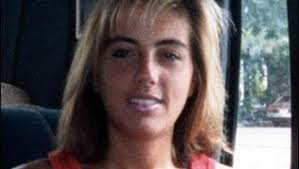At e-Lawyer.com we feel that everyone should have a living will. We feel so strongly abut it that we offer free living will forms on our website. Simply register and order the free living will form and it will be instantly sent to you by w-mail.
the case of Terry Schiavo is one of the most famous cases which involved the withdrawal of life support to a person in a a permanent vegetative state without any hope of recovery. The governor of Florida, Jeb Bush, was a party to litigation that could have been avoided completely had Terry Schiavo signed a living will.
Theresa Marie Schindler “Terry” was born on December 3, 1963, and lived with or near her parents in Pennsylvania until she married Michael Schiavo on November 10, 1984. Michael and Terry moved to Florida in 1986. They were happily married and both were employed. They had no children.
On February 25, 1990, their lives changed. Terry, age 27, suffered a cardiac arrest as a result of a potassium imbalance. Michael called 911, and Terry was rushed to the hospital. She never regained consciousness.
From 1990 on, Terry lived in nursing homes with constant care. She was fed and hydrated by tubes. The staff changed her diapers regularly. She has had numerous health problems, but none had been life threatening.
For the first three years after this tragedy, Michael and Terry’s parents, Robert and Mary Schindler, enjoyed an amicable relationship. However, that relationship ended in 1993 and the parties literally stopped speaking to each other. In May of 1998, eight years after Terry lost consciousness, Michael petitioned the guardianship court to authorize the termination of life-prolonging procedures. The Schindlers opposed Michael’s The difficult decision was placed in the hands of the court.
After a trial, at which both Michael and the Schindlers presented evidence, the guardianship court authorized the discontinuance of artificial life support. The trial court found by clear and convincing evidence that Terry Schiavo was in a persistent vegetative state and that Terry would elect to cease life-prolonging procedures if she were competent to make her own decision.
The severity of Terry’s medical condition was explained by the court lower court as follows:
The evidence is overwhelming that Terry is in a permanent or persistent vegetative state. It is important to understand that a persistent vegetative state is not simply a coma. She is not asleep. She has cycles of apparent wakefulness and apparent sleep without any cognition or awareness. As she breathes, she often makes moaning sounds. Terry has severe contractures of her hands, elbows, knees, and feet.
Over the span of this last decade, Terry’s brain has deteriorated because of the lack of oxygen it suffered at the time of the heart attack. By mid 1996, the CAT scans of her brain showed a severely abnormal structure. At this point, much of her cerebral cortex is simply gone and has been replaced by cerebral spinal fluid. Medicine cannot cure this condition. Unless an act of God, a true miracle, were to recreate her brain, Terry will always remain in an unconscious, reflexive state, totally dependent upon others to feed her and care for her most private needs. She could remain in this state for many years.
In the final analysis, the difficult question that faced the trial court was whether Terry Marie Schindler Schiavo, not after a few weeks in a coma, but after ten years in a persistent vegetative state that has robbed her of most of her cerebrum and all but the most instinctive of neurological functions, with no hope of a medical cure but with sufficient money and strength of body to live indefinitely, would choose to continue the constant nursing care and the supporting tubes in hopes that a miracle would somehow recreate her missing brain tissue, or whether she would wish to permit a natural death process to take its course and for her family members and loved ones to be free to continue their lives.
After trial, the judge granted the Husband’s request to take his wife off of life support.
The Schindlers filed numerous appeals and legal challenges to the court’s order. An appeals court reopened the case and allowed a hearing on the issue of whether there was enough evidence to support the determination that Mrs. Schiavo would choose to withdraw the life-prolonging procedures.
In deciding that she would so choose, the court stated:
Each of us, however, has our own family, our own loved ones, our own children. From our review of the videotapes of Mrs. Schiavo, despite the irrefutable evidence that her cerebral cortex has sustained the most severe of irreparable injuries, we understand why a parent who had raised and nurtured a child from conception would hold out hope that some level of cognitive function remained. If Mrs. Schiavo were our own daughter, we could not but hold to such a faith.
But in the end, this case is not about the aspirations that loving parents have for their children. It is about Terry Schiavo’s right to make her own decision, independent of her parents and independent of her husband…. It may be unfortunate that when families cannot agree, the best forum we can offer for this private, personal decision is a public courtroom.
Terry’s nutrition and hydration tube was removed on October 15, 2003.
On October 21, 2003, the Florida Legislature passed a law which was signed by the governor which enabled the governor to order that the the nutrition and hydration tube be reinserted.
Michael Schiavo then filed another case to challenge the governor’s order. The court agreed with Michael and found the law unconstitutional.
The Florida Supreme Court affirmed the decision on appeal.
The feeding tube was removed and Terry died on March 31, 2005.


Recent Comments